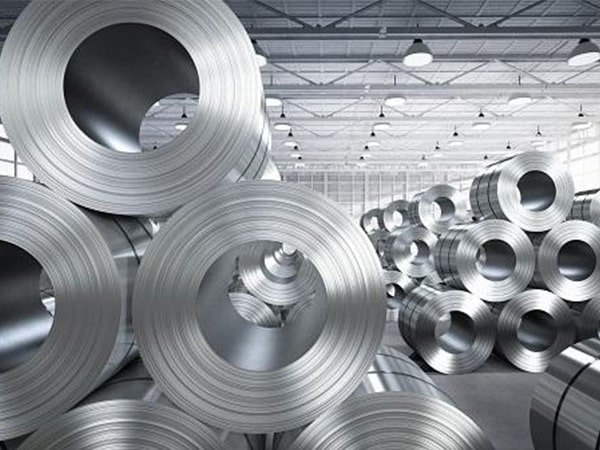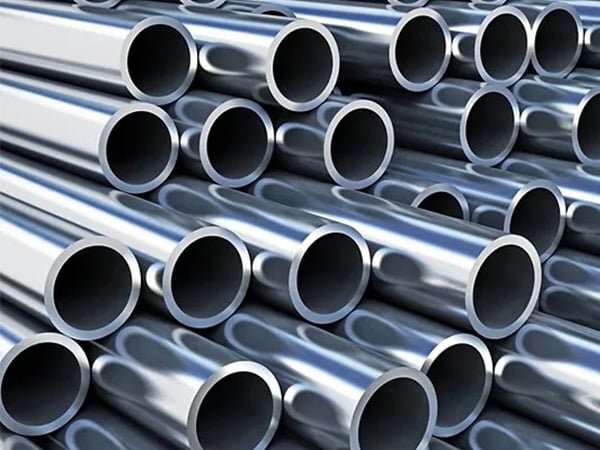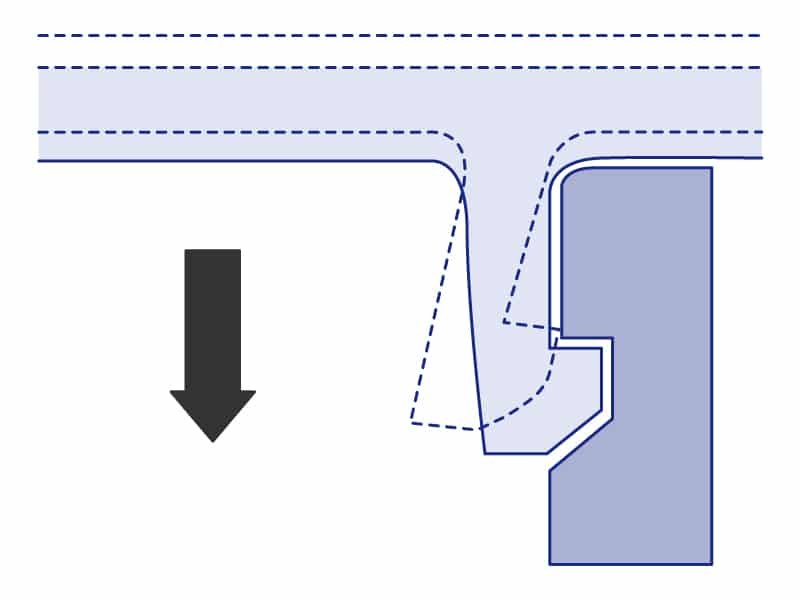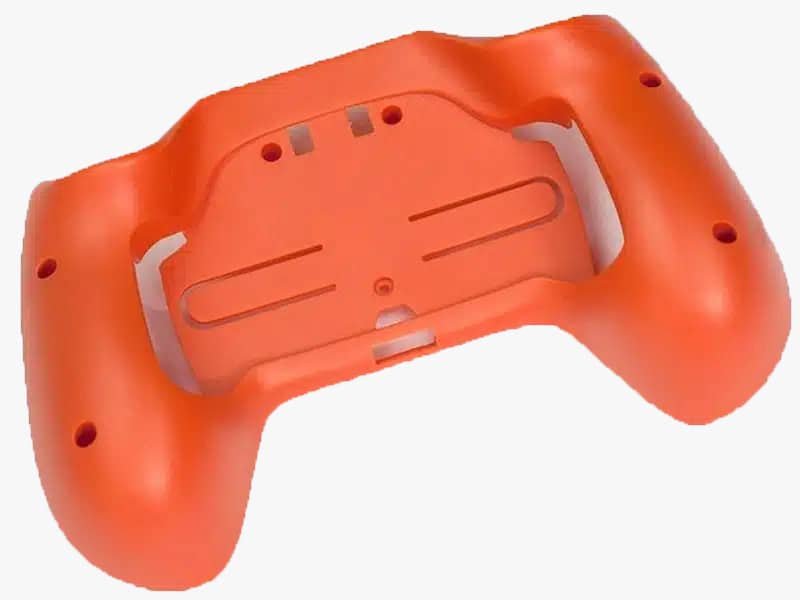Stainless steel is a common material in CNC machining due to its unique blend of strength, corrosion resistance, and aesthetic appeal. The stainless steel machined parts are used across industries. In this article, we will learn why stainless steel is a preferred material in CNC ss machining.
What Is Stainless Steel?
Stainless steel is an iron-based alloy with at least 10.5% chromium and no more than 1.2% carbon. Its corrosion resistance comes from a thin chromium oxide layer that naturally forms on the surface, preventing rust and staining. Additional elements such as nickel, manganese, and molybdenum further improve strength, durability, and resistance to harsh environments.
Thanks to its strength, corrosion resistance, and versatility, stainless steel is widely used in construction, automotive parts, kitchenware, chemical processing, and medical equipment. These properties also make stainless steel an ideal material for CNC machining, allowing manufacturers to produce precise, durable, and high-quality components for a wide range of applications.
Understanding Different Stainless Steel Grades
Here are the most common stainless steel grades and their key properties:
- 201 Stainless Steel: Low nickel content, cost-effective, moderate corrosion resistance. Often used in kitchen utensils, sinks, and decorative applications.
- 204 Stainless Steel: Similar to 201 but with slightly improved corrosion resistance and strength. Suitable for structural parts and consumer products.
- 301 Stainless Steel: Higher strength with good corrosion resistance, often used in automotive trim, springs, and structural components.
- 304 Stainless Steel: The most widely used grade, offering excellent corrosion resistance, good formability, and versatility. Ideal for food processing, medical equipment, and architectural applications.
- 316 Stainless Steel: Contains molybdenum for superior corrosion resistance, especially in marine or chemical environments. Preferred for pharmaceutical, chemical, and coastal applications.
Why Choose Stainless Steel for CNC Machining?
CNC stainless steel machining is favored in machining projects for its exceptional properties. Its corrosion resistance, driven by a minimum of 10.5% chromium content, forms a protective oxide layer that shields parts from rust, making it ideal for harsh environments like marine or chemical processing. Additionally, stainless steel’s high tensile strength surpasses that of mild steel or brass, making it suitable for parts under significant stress.
The versatility of stainless steel machining allows manufacturers to create complex geometries with tight tolerances. Moreover, stainless steel’s hygienic properties make it indispensable in food processing and pharmaceutical industries.
The aesthetic of stainless steel CNC machining parts is another key advantage. With polished finishes, stainless steel is popular in consumer goods. Its durability ensures long-lasting performance, resisting wear and extreme temperatures.

Common CNC Machining Processes for Stainless Steel
Stainless steel can undergo a variety of machining processes, each suited for different part designs, thicknesses, and precision requirements. Here’s a comprehensive overview of common stainless steel CNC and related processes:
CNC Milling: Uses rotating cutting tools to shape flat surfaces, slots, and complex geometries with high precision; selecting the right tool and feed rate is essential to prevent rapid tool wear.
CNC Turning: The workpiece rotates while a fixed cutting tool removes material, ideal for cylindrical components like shafts and rings; minimizing tool overhang improves accuracy.
Drilling: Creates holes in stainless steel for screws, bolts, or secondary assembly; often combined with other machining operations for precision.
Threading: Produces internal or external threads on parts for fasteners or pipe fittings, commonly used in plumbing and industrial components.
Laser Cutting: Employs a focused laser beam to melt and remove material, perfect for thin stainless steel sheets; provides high precision without tool wear but requires skilled operators.
Grinding: Enhances surface finish and dimensional accuracy by removing small amounts of material; also eliminates burrs from welding or previous processes.
EDM (Electrical Discharge Machining): Uses controlled electrical pulses to cut intricate shapes in stainless steel, suitable for hard-to-machine areas but limited in thickness.
Waterjet Cutting: High-pressure water cuts stainless steel without heat-affected zones, effective for thicker sheets; material corrosion resistance should be considered during the process.
Types of Stainless Steel for CNC Machining
Stainless steel comes in various grades and types, each with distinct properties that influence CNC stainless steel machining. The most common types include:
Austenitic Stainless Steels
Austenitic stainless steels, part of the AISI 200 and 300 series, are the most widely used in SS machining due to their excellent corrosion resistance and versatility. These non-magnetic alloys, containing nickel, manganese, and sometimes molybdenum, cannot be hardened by heat treatment but offer high toughness and ductility.
Ferritic Stainless Steels
Ferritic stainless steels, part of the AISI 400 series, are Magnetic and moderately corrosion-resistant, but with lower toughness compared to austenitic grades. They offer good chemical resistance and are easier to machine in some cases.

Martensitic Stainless Steels
Martensitic stainless steels are known for their high hardness and strength, achieved through heat treatment. These grades, also in the AISI 400 series, are magnetic and can have high or low carbon content, but are less corrosion-resistant.
Duplex Stainless Steels
Duplex stainless steels combine features of austenitic and ferritic steels, offering high strength and corrosion resistance, but can be difficult to machine.

Precipitation-Hardened Stainless Steels
Precipitation-hardened (PH) stainless steels, such as 17-4 PH, are engineered for extreme strength through age-hardening treatments, offering up to four times the yield strength of austenitic grades.
There is a table to show the properties details:
| Property | Austenitic | Ferritic | Martensitic | Duplex | Precipitation-Hardened |
|---|---|---|---|---|---|
| Material Examples | Type 304, Type 316, Alloy 20, Type 321H, Type 309S | Type 405, 409L, 410L, 430, 439, 447 | X12Cr13, X20Cr30, X50CrMoV15, X17CrNi16-2 | X2CrNiN22-2, X2CrNiMoCuN25-6-3, X2CrCuNiN23-2-2 | 17-4 PH |
| Corrosion Resistance | Very high (316 excels with molybdenum) | Very high | High, less than austenitic | Good to very high | High |
| Heat Treatable | No, annealing improves 304 SS machinability | No | Yes, for high hardness | Yes | Yes, via age-hardening |
| Magnetic | Non-magnetic | Magnetic | Mostly magnetic | Magnetic (ferritic structure) | Typically magnetic |
| Toughness | Very high | Medium | Low (untempered), high (tempered) | High | Variable |
| Ductility | Very high | Medium | High | Medium to high | Variable |
| Welding Ability | High | Low | High | High with nitrogen | Variable |
| Chromium Content | 18% | 10.5–30% | 12–17% | 18–30% | 17% |
| Nickel Content | 8–12% | Minimal | 0–4% | 1–9.5% | 4% |
| Molybdenum Content | 2–7% (some grades) | 1–2% | Nil to 1% | 0.1–5% | Cu/Ti/Al additives |
| Carbon Content | <0.1% | <0.08% | 0.1–1.2% | None | Minimal |
| Stress Corrosion Cracking | Low resistance | High resistance | Poor resistance | Very high resistance | Moderate resistance |
| Applications | 304: Kitchenware, automotive trim; 316: Marine fittings, pharmaceutical tools; aerospace, cutlery | Kitchenware, automotive exhausts, industrial tools | Surgical instruments, dental tools, firearms, cutlery, ball bearings | Heat exchangers, piping, reactors, marine equipment | Aerospace, marine construction, nuclear plants, chemical industry |
Challenges in CNC Machining Stainless Steel
SS machining presents several challenges that require careful consideration:
- Work Hardening: Stainless steel harden during machining, increasing resistance and accelerating tool wear. This makes SS machinability more complex than softer metals.
- Heat Generation: Low thermal conductivity traps heat at the cutting zone, potentially deforming parts or damaging tools.
- Tool Wear: The material’s strength wears down cutting tools faster, necessitating frequent replacements.
- Chip Formation: Stainless steel produces stringy chips that can clog machinery, disrupting CNC stainless steel machining processes.
- Precision Issues: Hardness can lead to dimensional inaccuracies if cutting parameters are not optimized.
CNC Machining Tips for Stainless Steel
Optimizing CNC stainless steel machining requires addressing challenges like work hardening, heat buildup, and chip formation with specialized techniques. Below are key strategies to ensure high-quality CNC stainless steel parts.
Choose Durable Tools: Select high-speed steel (HSS) tools with tungsten, molybdenum or coatings like TiAlN to reduce wear and improve surface finish, especially for high-speed, high-feed operations.
Optimize Cutting Parameters: Use lower cutting speeds (50–100 m/min) and higher feed rates to minimize heat buildup and work hardening, preserving machinability.
Ensure Robust Workholding: Employ rigid workholding devices to minimize vibrations, ensuring stability and preventing deformation of CNC stainless steel parts during machining.
Manage Heat with Coolants: Apply oil-based or high-lubricity coolants tailored to the specific stainless machining operation.
Control Chip Formation: Implement pecking and chip-breaking cycles during milling to break stringy chips into smaller pieces, preventing clogs and ensuring smooth CNC stainless operations. Regularly inspect tools, as worn tools produce excessive chips, compromising quality.
Partner with Experts: For complex CNC machining stainless steel projects, collaborate with experienced contract manufacturers. Their expertise ensures optimal tool selection, parameter settings, and process control, delivering precise, high-quality components.
Surface Finishing Options for Stainless Steel Machined Part
Surface finishing is critical in CNC stainless steel machining, as it affects both aesthetics and functionality. Common options include:
| Finish | Appearance | Applications | Benefits |
|---|---|---|---|
| Polishing | Shiny, mirror-like | Consumer goods, jewelry | Enhances aesthetic appeal |
| Brushing | Textured, silver-gray | Industrial parts | Hides scratches, durable look |
| Sandblasting/Pickling | Matte, uniform | Marine components | Conceals imperfections |
| Electropolishing | Smooth, glossy | Medical devices | Improves corrosion resistance |
| Electroplating | Metallic coating | Automotive parts | Adds durability, aesthetics |
Applications of CNC Stainless Steel Parts Across Industries
CNC stainless steel parts find applications in diverse industries due to their durability and corrosion resistance:- Medical Industry: Surgical instruments, implants, and medical devices require high precision and biocompatibility.
- Food and Beverage: Equipment such as tanks, valves, and conveyors benefit from stainless steel’s hygienic properties.
- Aerospace: Components exposed to extreme conditions demand high-strength stainless steel parts.
- Chemical Processing: Corrosion-resistant parts are essential for handling aggressive chemicals.
- Automotive: Exhaust systems and structural components utilize stainless steel for strength and longevity.
- Architectural: Stainless steel’s aesthetic appeal and weather resistance make it popular for decorative elements.




